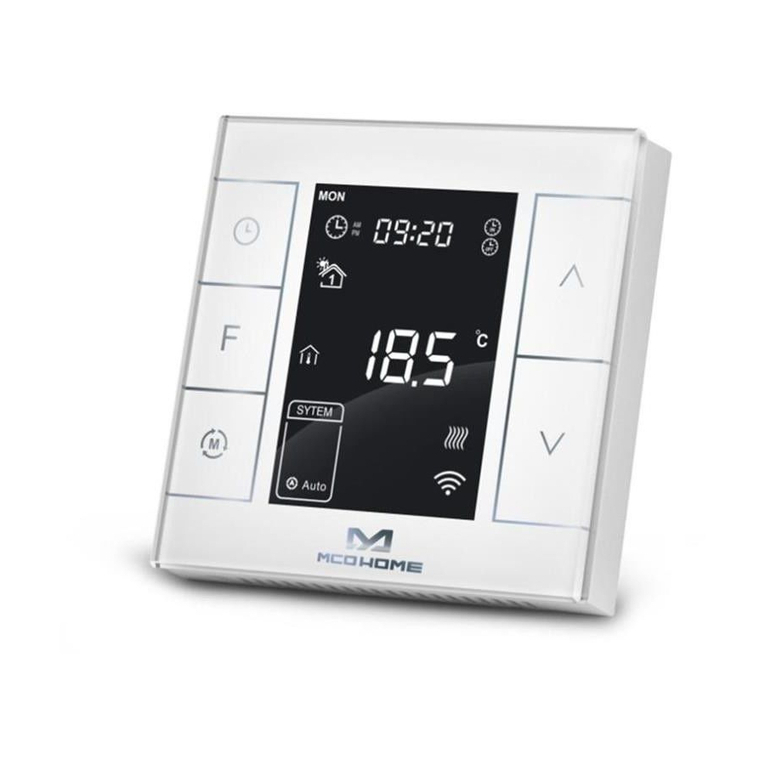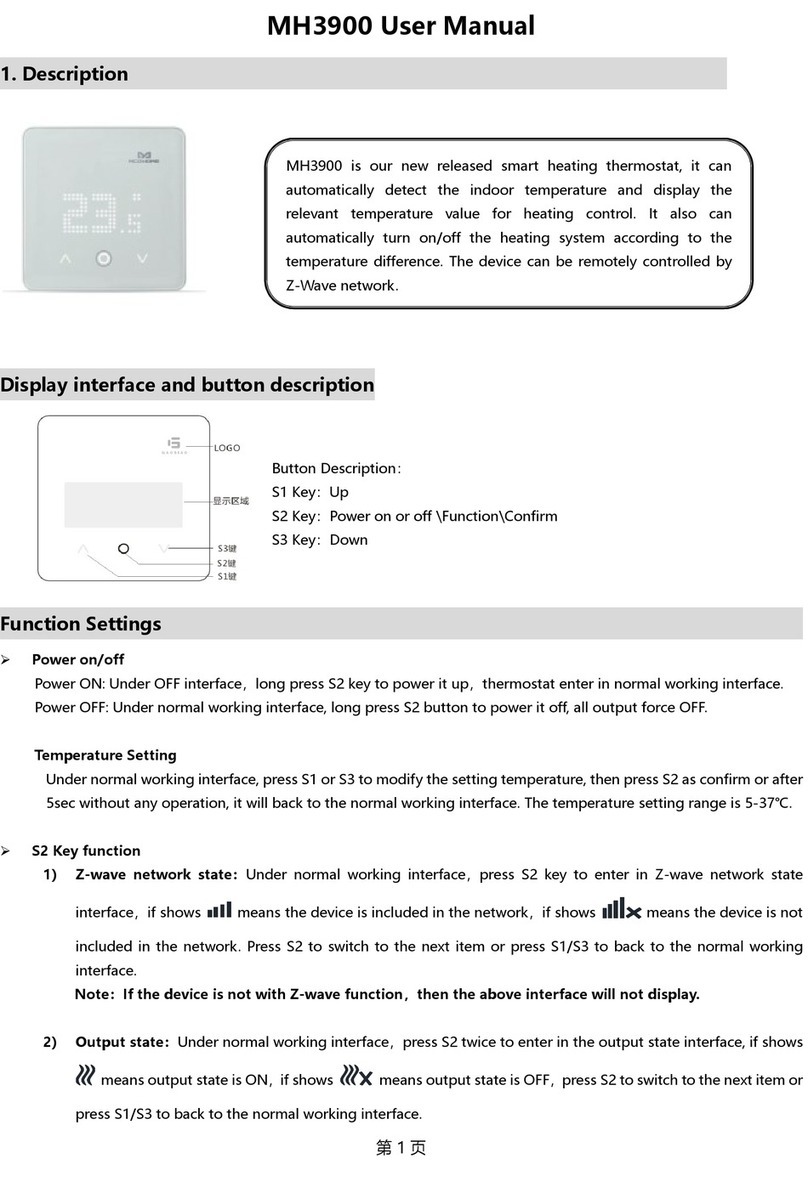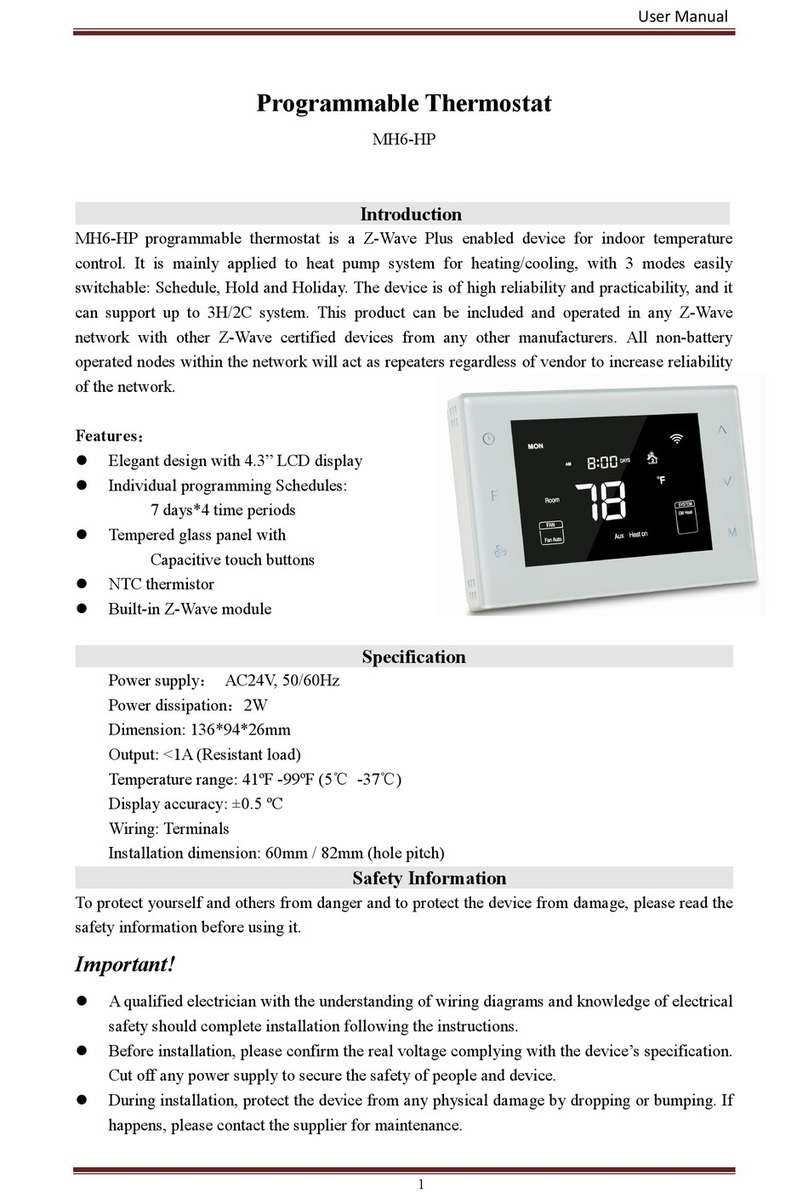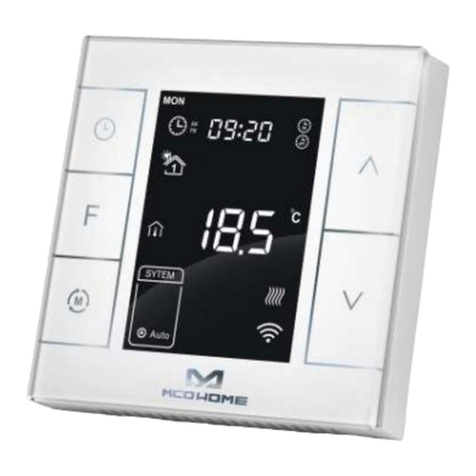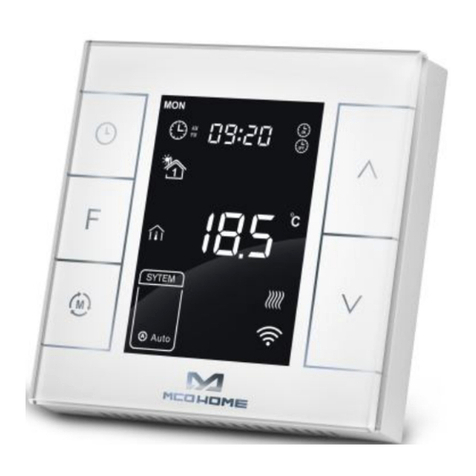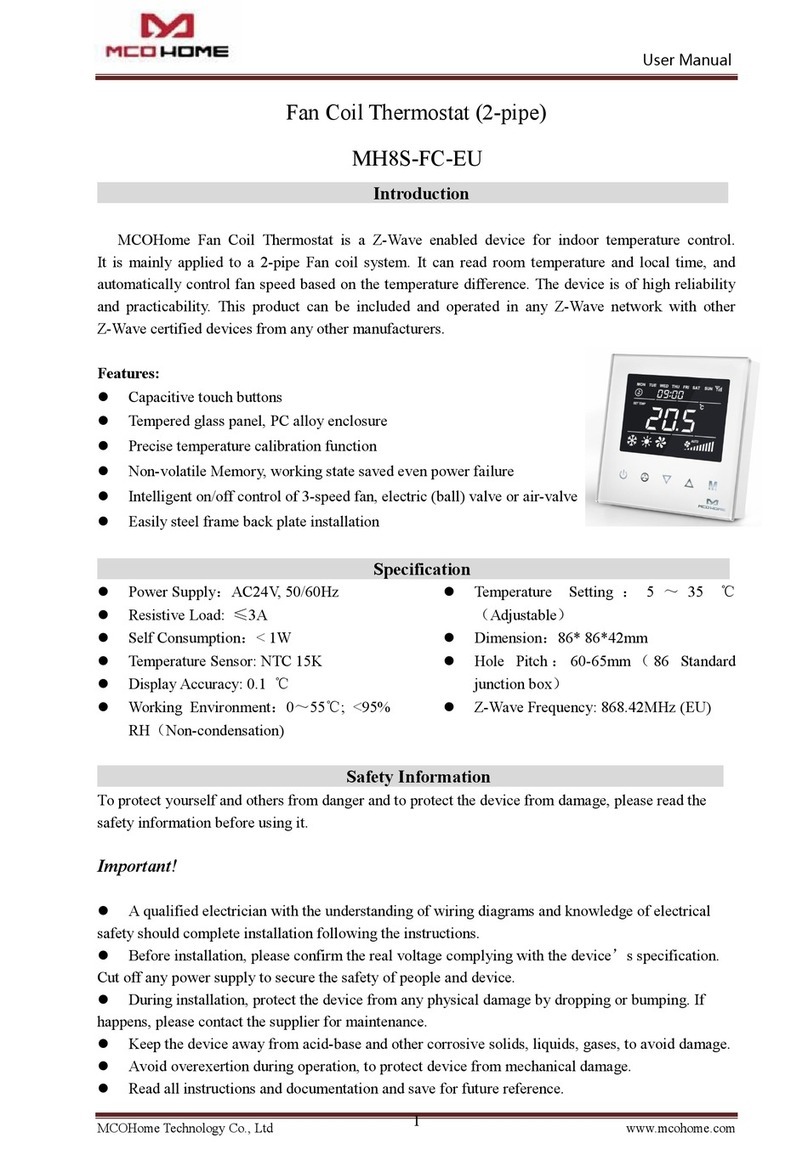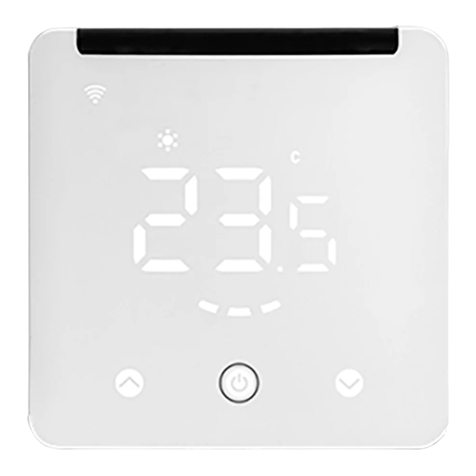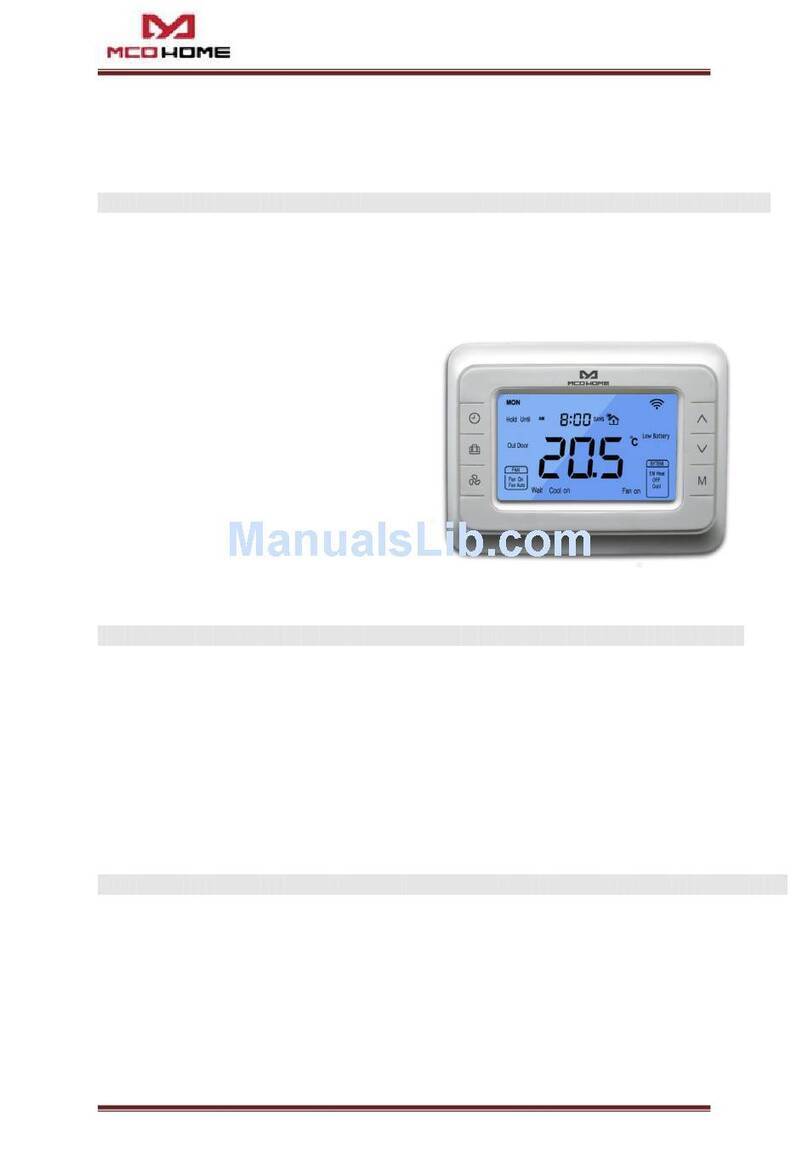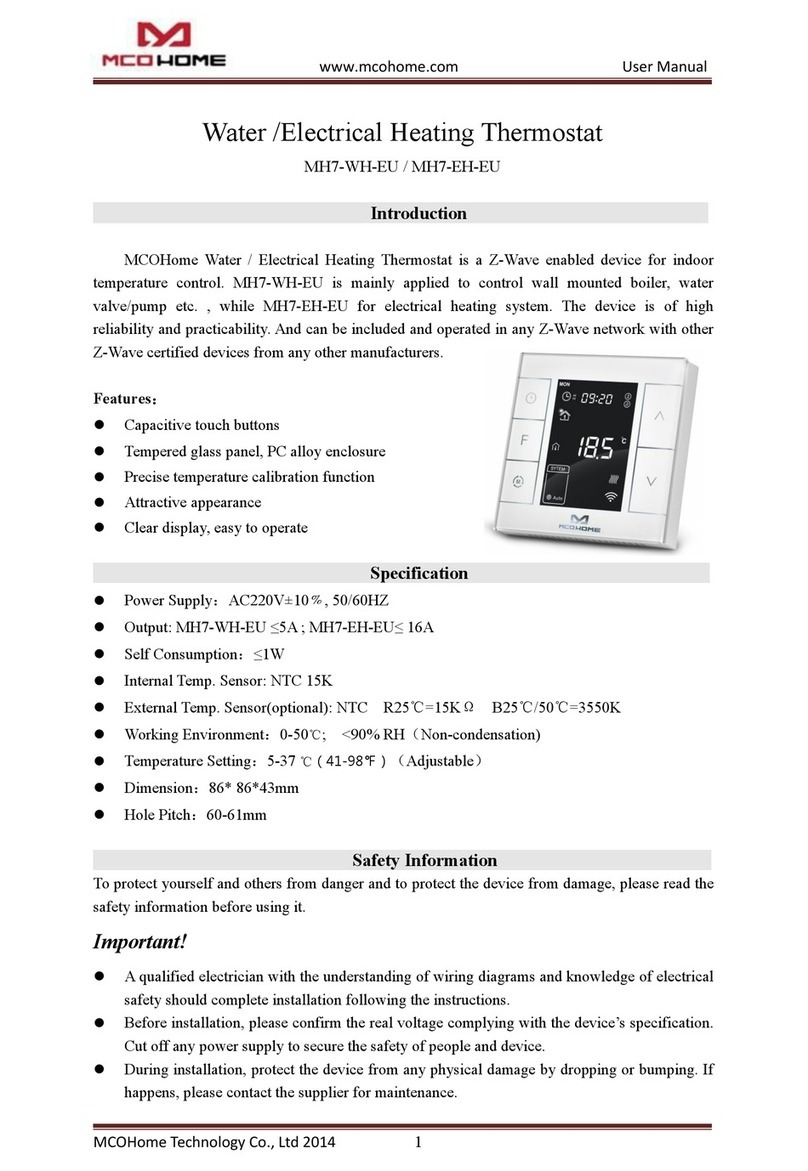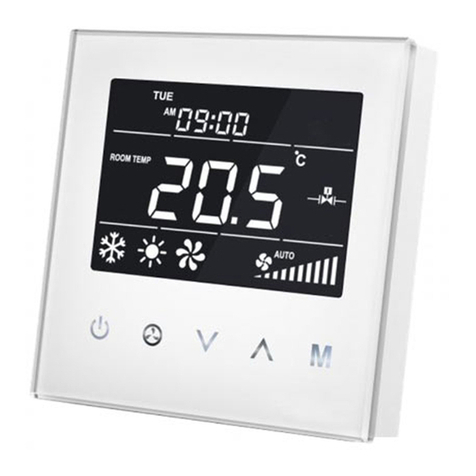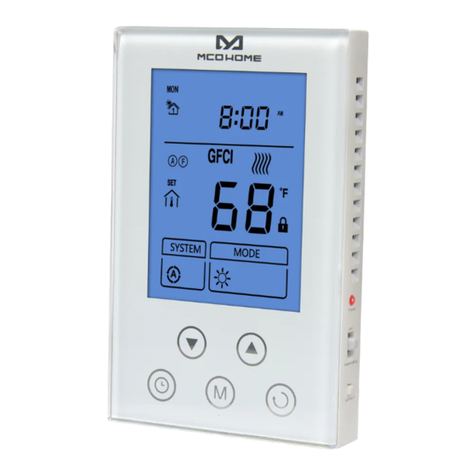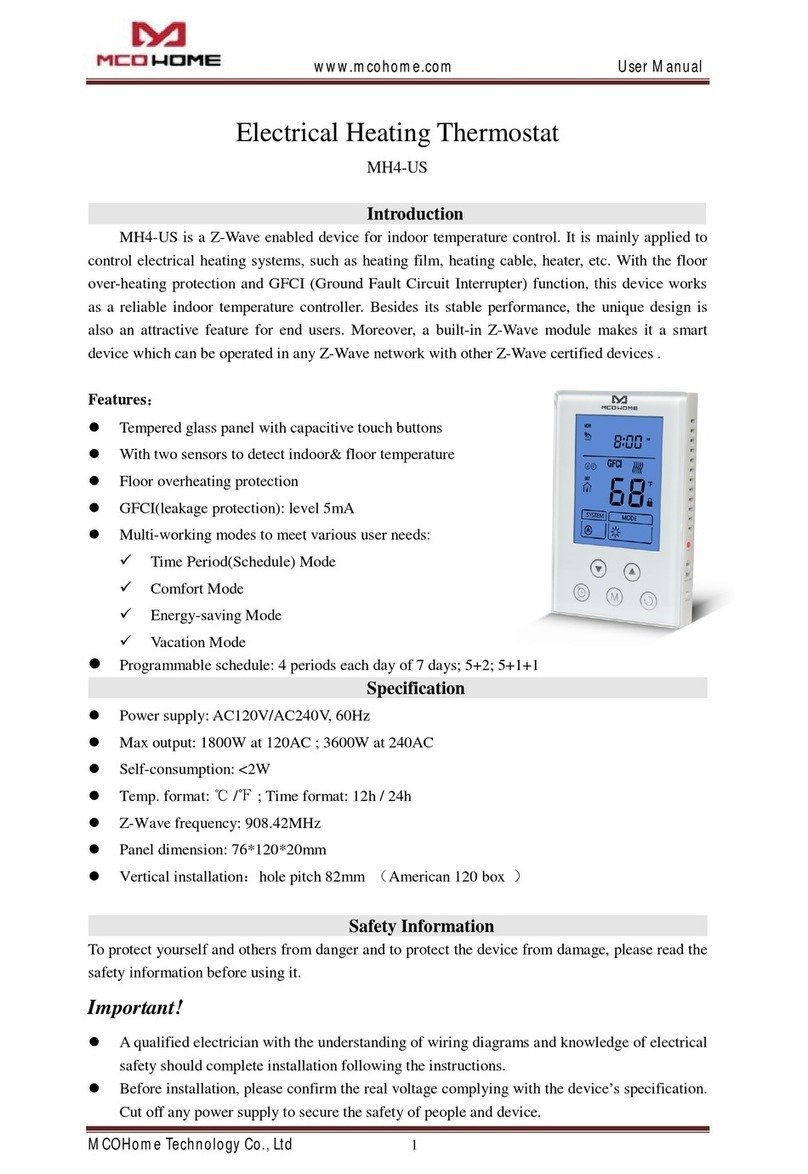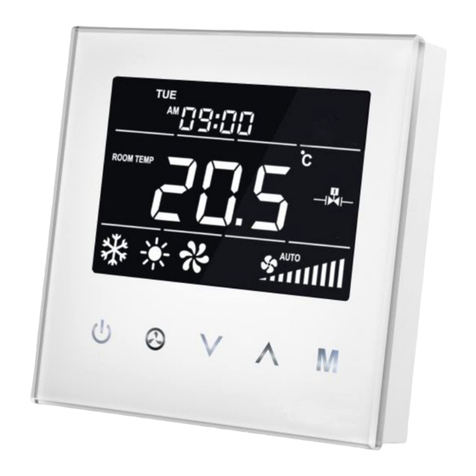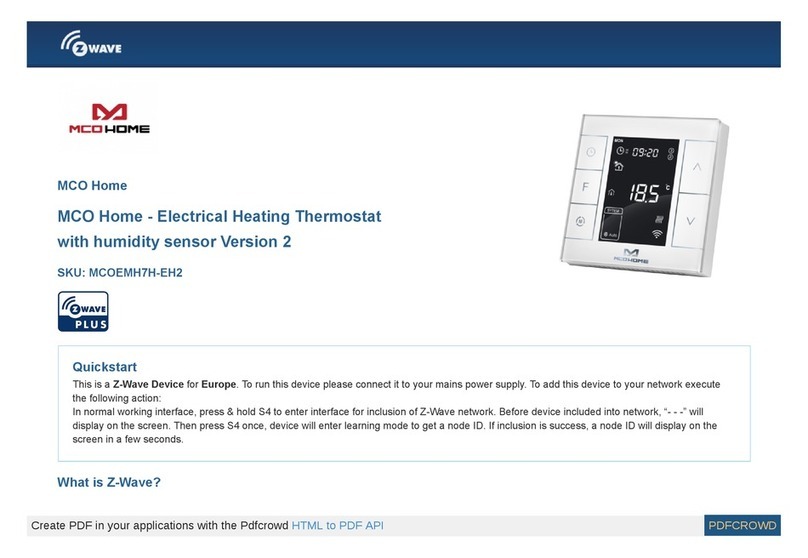Under normal working interface, press S2 key to enter in Z-wave network state. Press S2 to switch to the next item, or press S1/S3 to back to the normal working
interface.
2. Output state:
Under normal working interface, press S2 twice to enter the output state interface. Press S2 to switch to the next item, or press S1/S3 to back to the normal
working interface.
3. Mode selection :
Under normal working interface, press S2 three times to enter into Mode Selection interface, press S1 or S3 to select mode. Press S2 to switch to the next item or
after 5sec without any operation, it will be back to the normal working interface.
4. LED Standby brightness setting:
Under normal working interface, press S2 four times to enter into LED standby brightness setting interface, press S1 or S3 to modify the brightness. Press S2 to
switch to the next item or after 5sec without any operation, it will be back to the normal working interface.
5. Power ON/OFF
Power ON: Under OFF interface, long press S2 key to power it up, thermostat enter in normal working interface.
Power OFF: Under normal working interface, long press S2 button to power it off, all output force OFF
6. Temperature Setting
Under normal working interface, press S1 or S3 to modify the setting temperature, then press S2 as confirm or after 5sec without any operation, it will be back to
the normal working interface. The temperature setting range is 5-37 °C
Mode Setting:
Manual mode:
The device control the room temperature by manual.
Room temperate=Setting temperature+ 1°C , Output ON;
Room temperate"<>‘:Setting temperature - 1°C , Output OFF
Energy-Saving mode:
Normal working interface display and indoor temperature. Press S1/S3 can set the device opening time, 20 min for a period, set range : 1 - 20 min
Note: This mode will not follow the setting temperature and the difference of indoor temperature to turn ON/OFF the device.
Temperature Calibration
Under shutdown state, long press S1+S3 button then enter temperature calibration interface, press S1 or S3 to switch the value, then press S2 to confirm the
setting. The temperature calibration range is -9.9 °C - +9.9 °C, default value is 0.
Quick trouble shooting
Here are a few hints for network installation if things dont work as expected.
1. Make sure a device is in factory reset state before including. In doubt exclude before include.
2. If inclusion still fails, check if both devices use the same frequency.
3. Remove all dead devices from associations. Otherwise you will see severe delays.
4. Never use sleeping battery devices without a central controller.
5. Dont poll FLIRS devices.
6. Make sure to have enough mains powered device to benefit from the meshing
Association - one device controls an other device
Z-Wave devices control other Z-Wave devices. The relationship between one device controlling another device is called association. In order to control a different
device, the controlling device needs to maintain a list of devices that will receive controlling commands. These lists are called association groups and they are
always related to certain events (e.g. button pressed, sensor triggers, ...). In case the event happens all devices stored in the respective association group will
receive the same wireless command wireless command, typically a 'Basic Set' Command.
Association Groups:
Group Number Maximum Nodes Description
11 Lifeline
25
Configuration Parameters
Z-Wave products are supposed to work out of the box after inclusion, however certain configuration can adapt the function better to user needs or unlock further
enhanced features.
IMPORTANT: Controllers may only allow configuring signed values. In order to set values in the range 128 ... 255 the value sent in the application shall be the
desired value minus 256. For example: To set a parameter to 200 it may be needed to set a value of 200 minus 256 = minus 56. In case of a two byte value the
same logic applies: Values greater than 32768 may needed to be given as negative values too.
Parameter 1: Automatic temperature value indication
